with a text by Elsa Barbieri
at Massimoligreggi in 2023, Catania, Italy
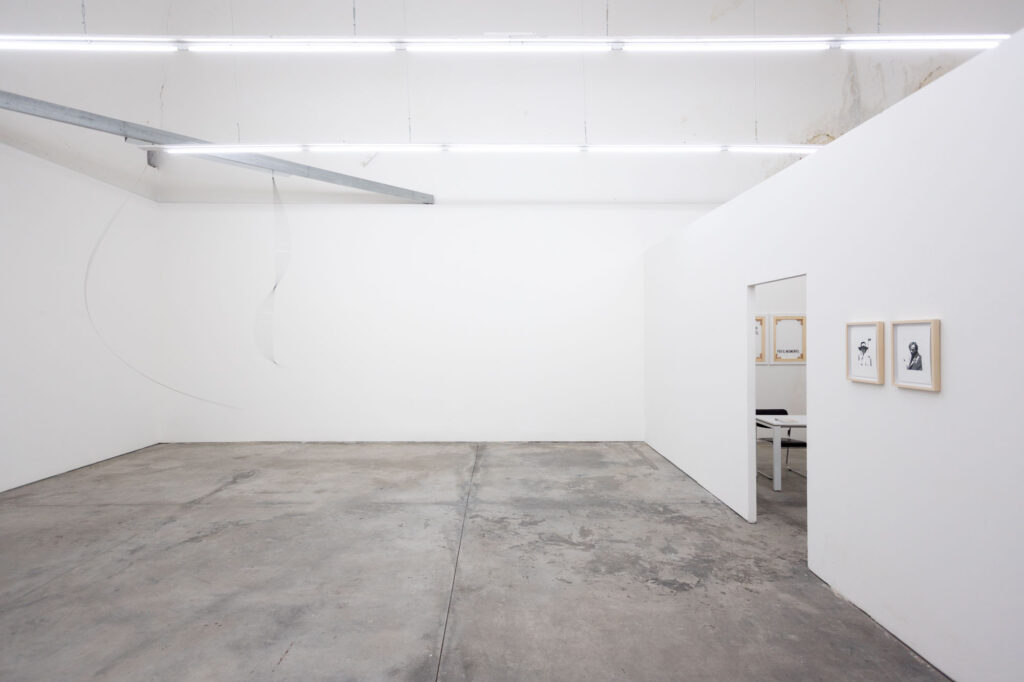
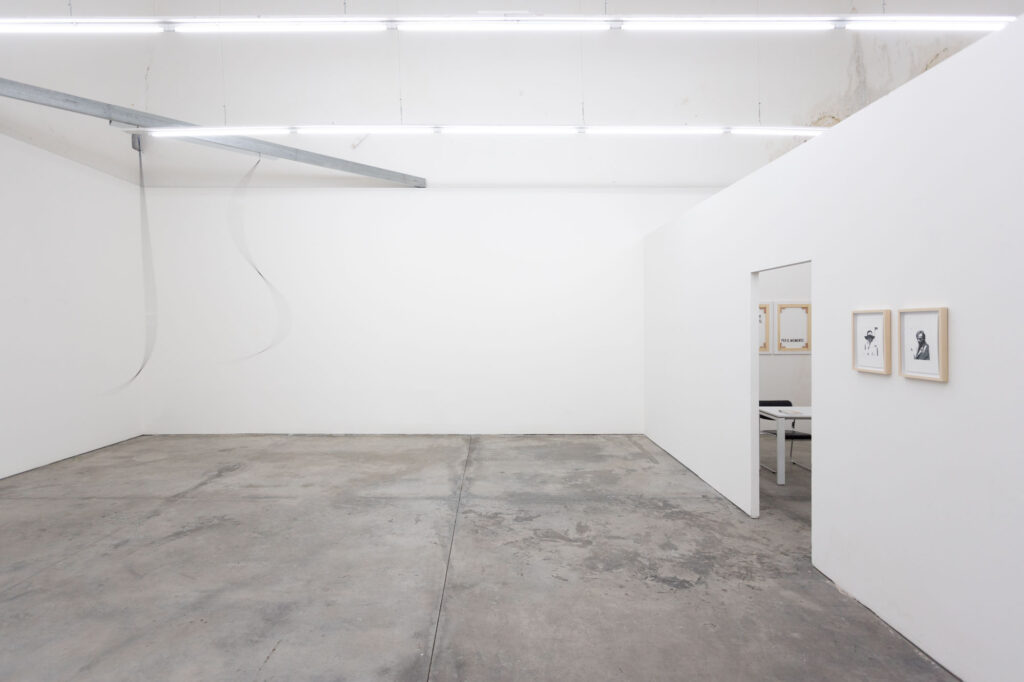
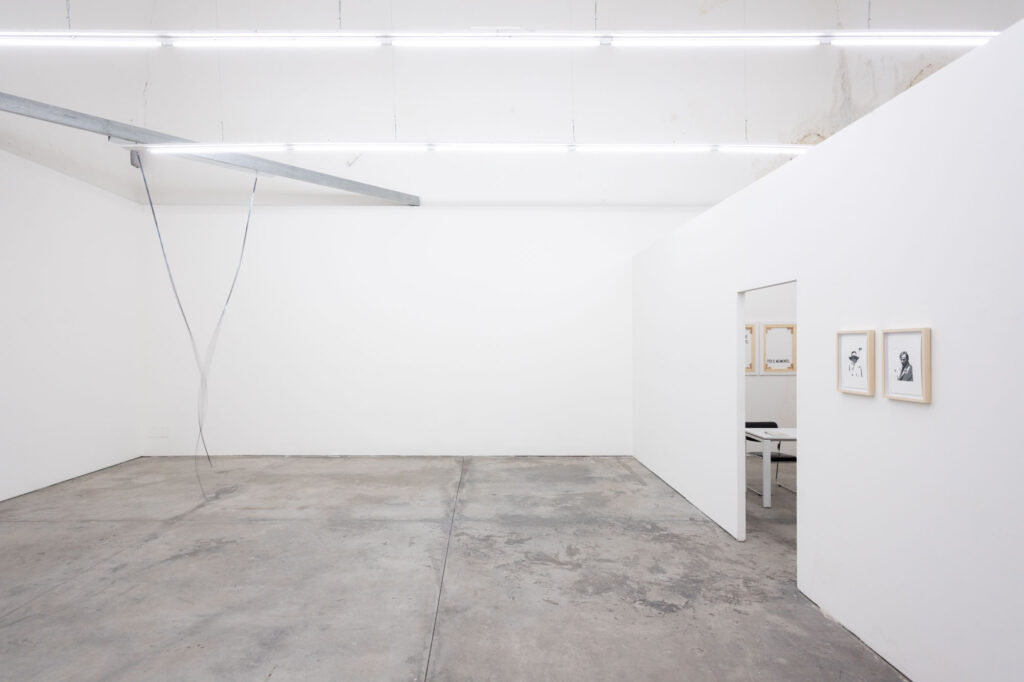
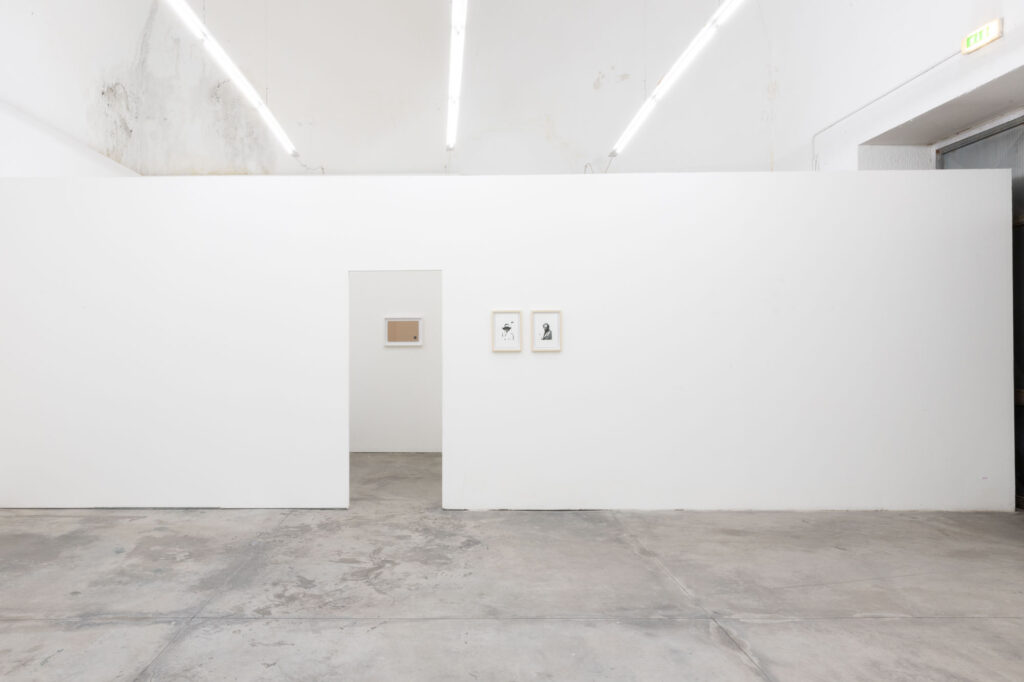
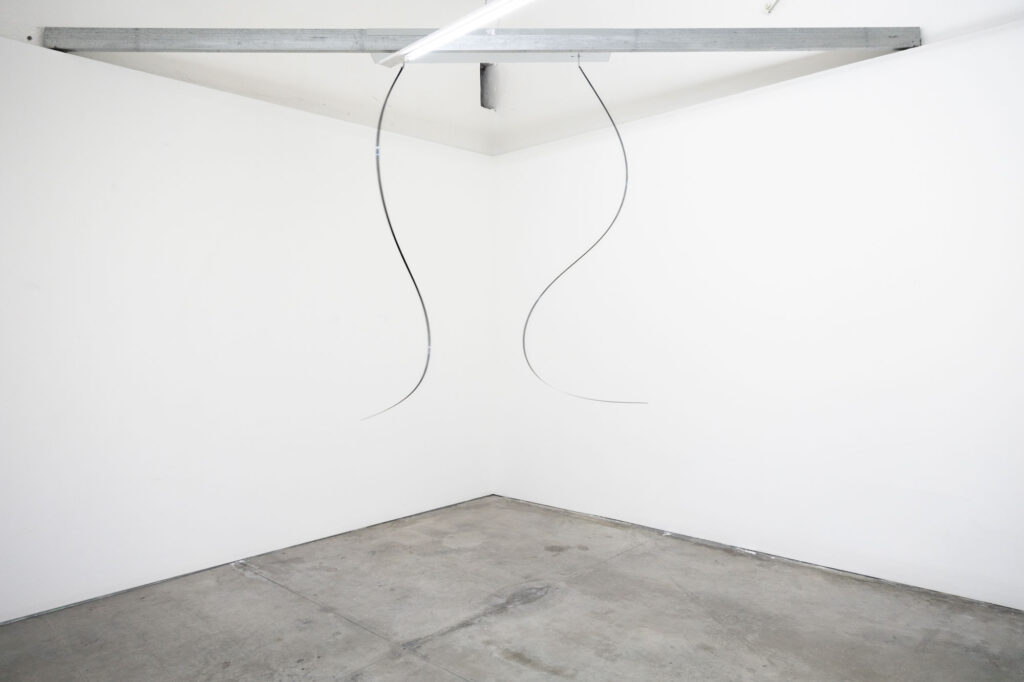
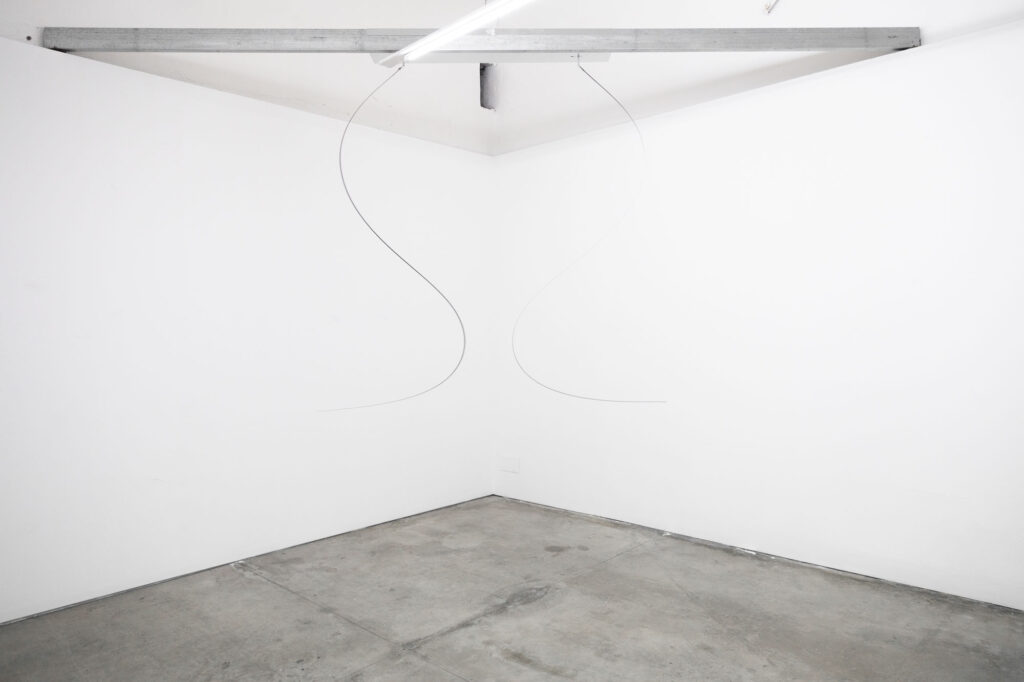
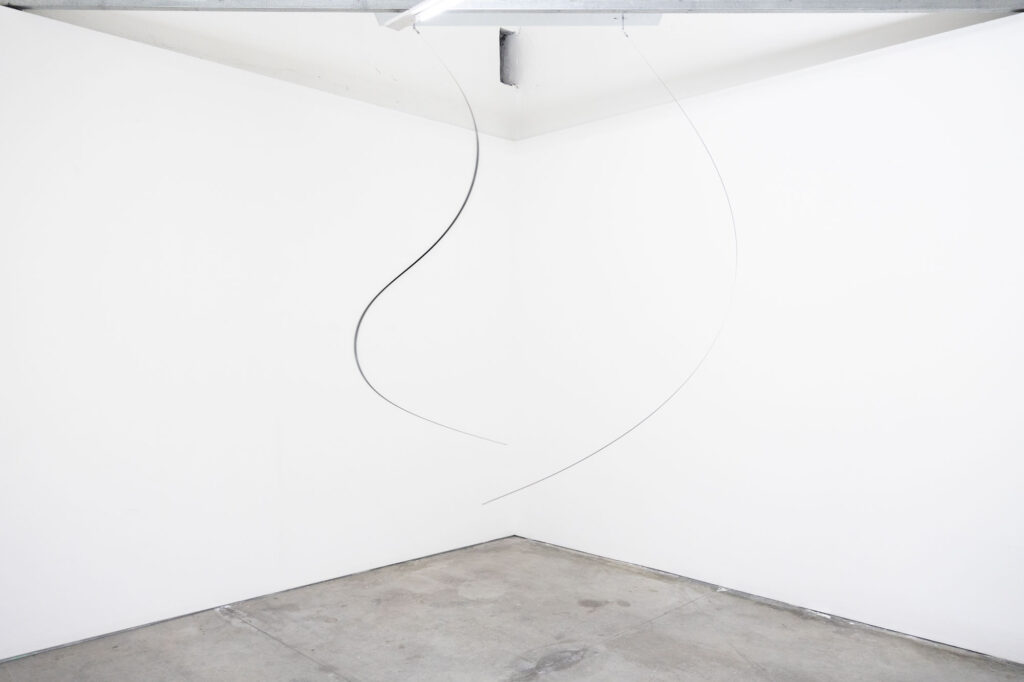
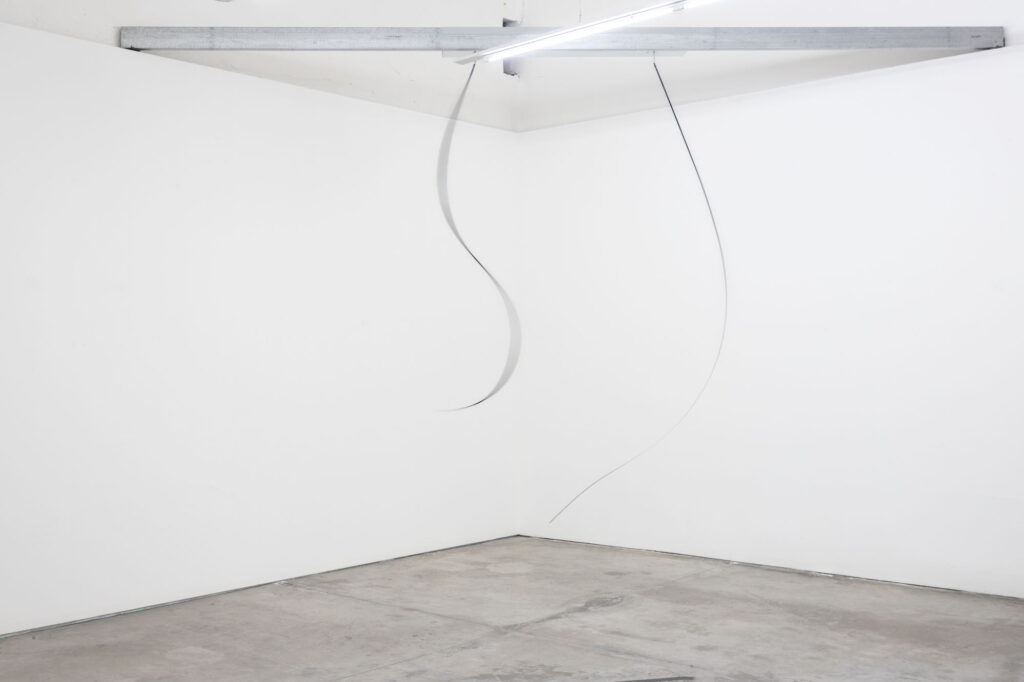
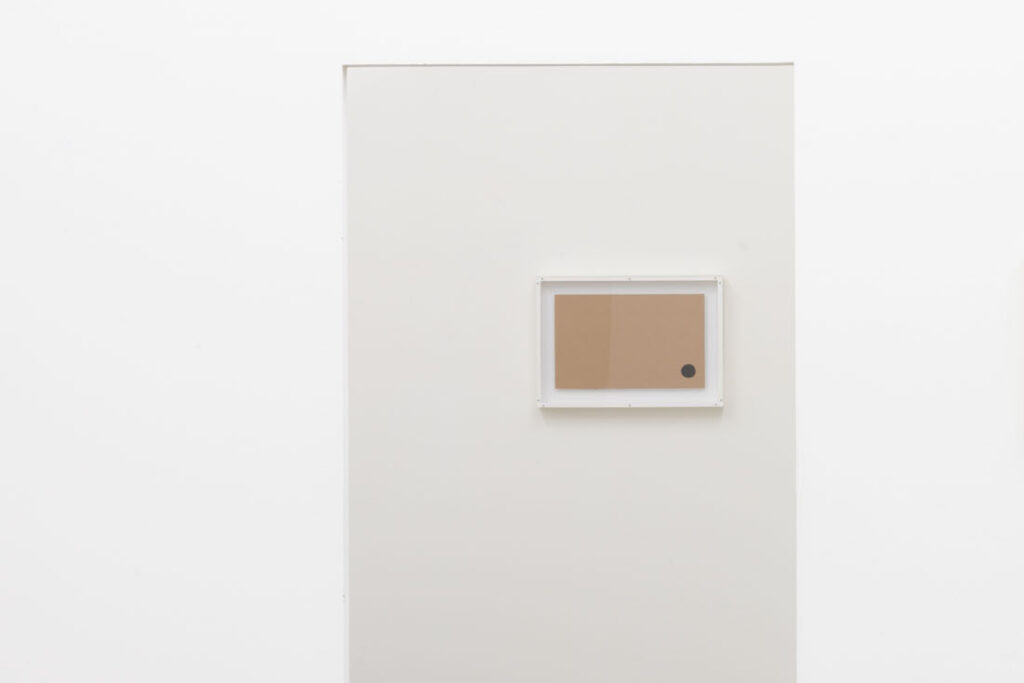
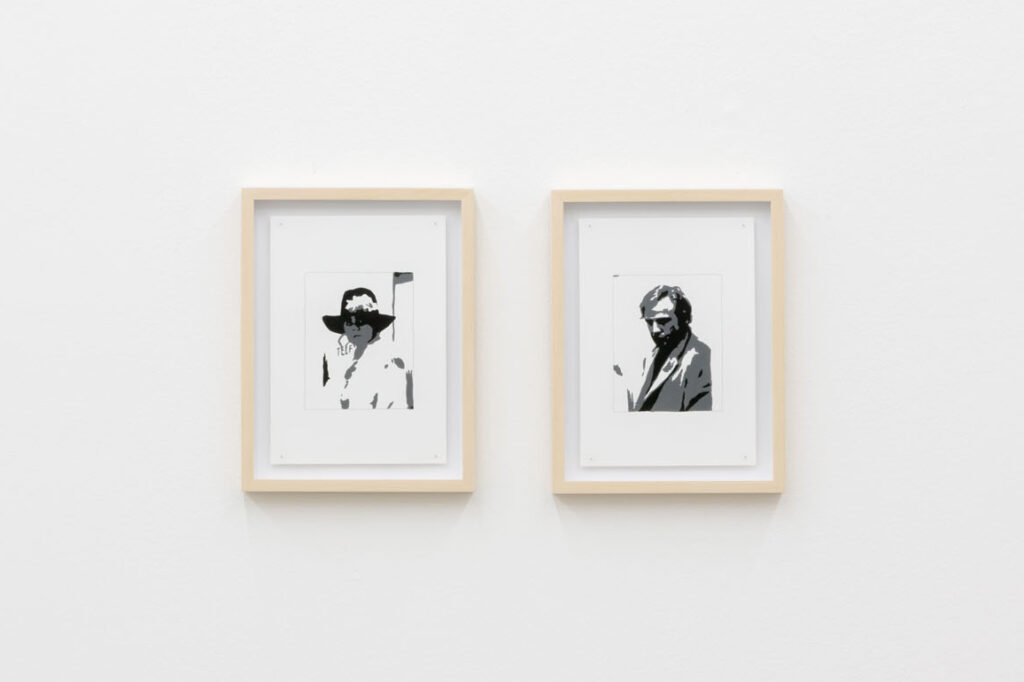
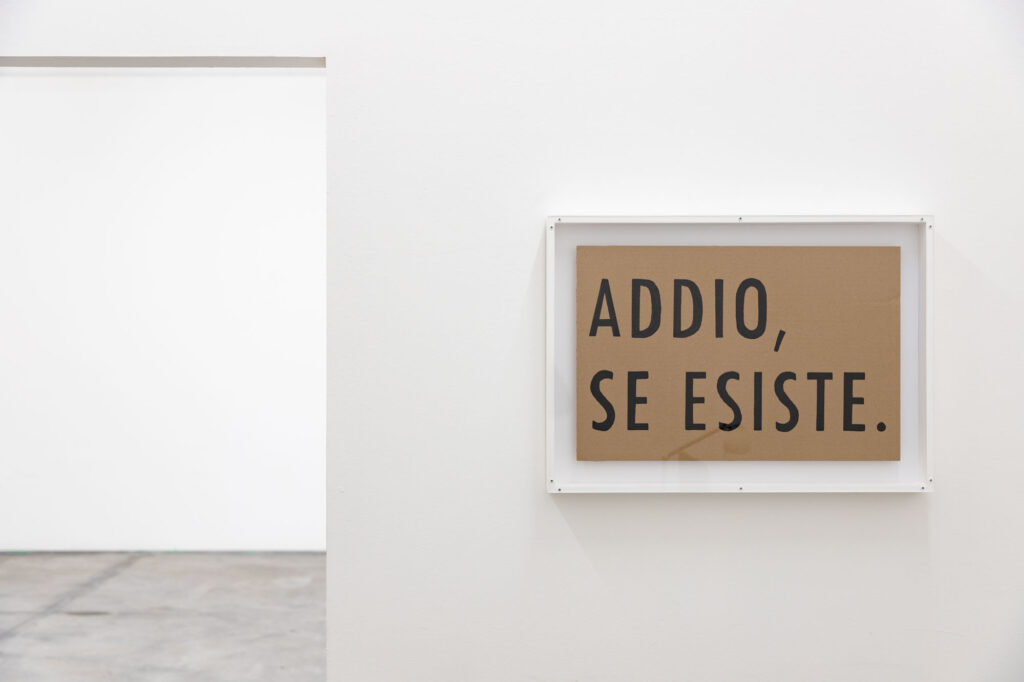
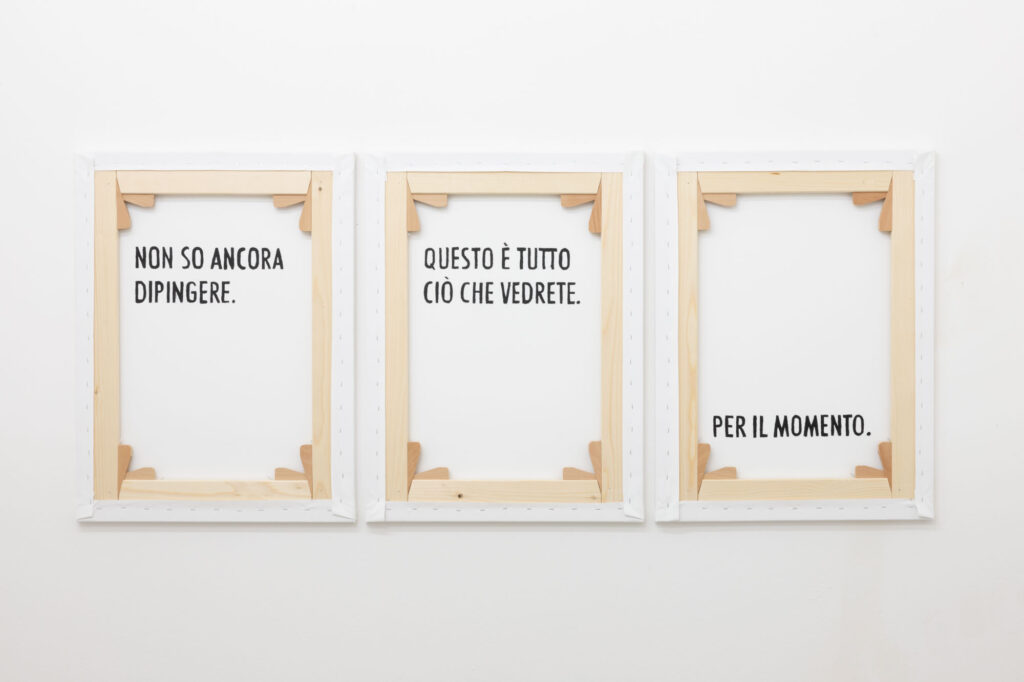
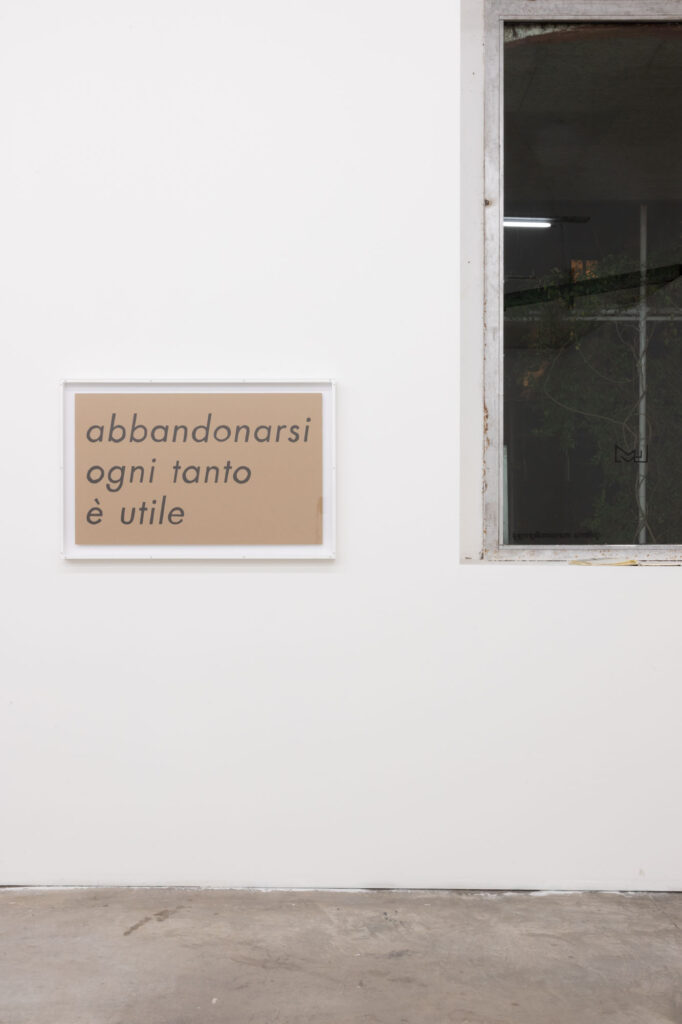
en
So vitally rooted in the body as a place for the unfolding of the singular plura-le being, Jean-Luc Nancy’s philosophical reflection comes to us on the occasion of Fabrice Bernasconi Borzì’s abbandonarsi ogni tanto è utile, offering us the possibility of thinking of dance as a mode of existence. Why, we may ask, in front of the work that fills the main space of the Massimo Ligreggi gallery, one last tango, do we use dance as a stimulus? Because dance, like touching, is movement and represents in itself the manifestation of the ontological body, the only meaning of existence. The touch-dance that belongs to the o-pera, as an aesthetic- cognitive experience, allows us a radical surrender to existence that opens our gaze to the plural singularity of existence and restores to us the full sense of freedom. The body’s original and ontological need to exist in movement is realised in the movement of the two blades. They each contain a quivering silence (interrupted by the deafening noise of their touch), a concealed image in which they unconsciously and mutually mirror each other. Together they are a metaphor for a stable disharmony resulting from the copresence of two polarities, movement and stillness. In the infinitesimal fissure that allows the two blades to move, to dance, touching, kissing, colliding and moving apart – every three minutes – a plot is woven tha draws us into the vortex of a tight, unyielding thought. Can we paraphrase it? No. Can we let ourselves be carried along by the reading with our whole body, touching it, as in a dance? Yes.
This body of reflections does not intend to explain what we are looking at but rather looks at the here and now of our presence, existing, material and touching. In the main room, two portraits of a man and a woman coexist with the two moving blades. Duality recurs, in the research as in the experience of Fabrice Bernasconi Borzì. He was born in Switzerland, in Geneva, in 1989. In a journey backwards, in 2018, he moved to Catania, trying to rediscover a cultural alte-rity peculiar to his originals and functional to his work. In him, two citizenships, two souls, two attitudes coexist that form the basis of the balanced conflict between forces that his work expresses. The time of activity, and therefore of work, also coexists, alternating with that of productive otium, during which, like a modern Marcel Proust, Bernasconi Borzì gathers impressions: “Linked to the sensations I was now feeling (…) these impressions would have been reinforced, they would have taken on the consistency of a particular type of pleasure, and almost of a picture of existence that I had, moreover, rarely had occasion to rediscover, but in which the reawakening of memories placed in the materially perceived reality a fairly large part of evoked, thought, elusive reality”.
With those impressions and with his predominantly simple, minimal, impulsive and pa-radical, even provocative and Dada-esque manner, Fabrice creates situations by subverting them. ‘Doctor of nothing’, as he used to call himself, Guy Debord was the guru of that programmatic approach historically known as Situationism. He claimed that “the more the spectator contemplates, the less he lives; the more he accepts to recognise himself in the dominant images of need, the less he understands his own existence and desire”. Bernasconi Borzì is the first spectator of himself and that is why he does not give form to a spectacle that does not want to reach anything other than himself, but on the contrary tries to reverse the generalised shift from having to seeming: he sees himself as a ‘sponge and a thief of ideas, but who works hard to be, truly, what he is’. Let us assume, as anticipated, the blades as a metaphor for a stable disharmony and try to understand it. To do so, we have to go back a few years: Fabrice, a Swiss-Italian, pursues his research in Switzerland, driven by curiosity and boundless ingenuity, while, in order to finance himself, he specialises in the field of museum installations, where the distance from the work of art is so great as to guarantee its safe preservation. So he experiments with always different materials and always the same rules. What remains of it? one last tango, created in a completely analogue and manual manner, without any computer or digital aids, in which lightness, joie de vivre and warmth, typical of Mediterranean culture, coexist with the coldness, in material terms, closer to Swiss rigour (the word of one who, with great love for both, has a good quarter of Swiss origin in his blood).
one last tango is to all intents and purposes an autobiographical and collective work, with a strong hypnotic value and at the same time a tangible presence that says and bears witness, in its immediacy, to the whole sense of what exists. It is autobiographical because it is, and could not be otherwise, a reflection of the per-sonality of its creator, and it is collective because Bernasconi Borzì detaches himself from it, allowing anyone, starting with that man and that woman portrayed, to appropriate it.
It is characteristic of Fabrice to create by subverting. To do so, he himself says, ‘requires strength and calculum’. This is also evident in the series of works he completes by surrendering himself from time to time. Thus, for example, the photographic series this could be, reproduces icons and symbols of Southern Italy as well as everyday, street situations through four-colour prints on paper, glued onto wooden panels and aluminium uprights. Their provisional character propels us into the artist’s world: they are photographs, yes, but they are also reflective patterns that he uses as configurations for future installations. In them he develops a series of do-mends on the meaning of making, its conceptual assumptions and its current interpretation. As also in the sculptures of the anti-hero series, unstable, discrete, useless and resistant to any form of evolution. It sounds absurd, perhaps, but it is also extremely human. Aren’t we, when we look for them, always running into the inability to find values and meanings with absolute certainty?
A cartel, of the kind that the protesters hold in their hands and that Bernasconi Borzì makes with puns, accompanies the exhibition, emphasising that to abandon oneself every now and then is useful. Between the time of work and the time of sleep there is the free time of otium, a fluid space in which to abandon means to rise up, to rise above, to transcend. Abandonment is not resignation, on the contrary. It is action, it is being totally what one is. Abandonment dances with determination, it takes boundless trust in life to understand it. Henri-Frédéric Amiel used to say: ‘A thousand steps forward, nine hundred and ninety-nine steps back: that’s the pro-gress’.
Isn’t that right Fabrice?
Elsa Barbieri